Waveform generators are electronic test equipment used to produce electrical signals and analyze the performance of your hardware device by varying the frequencies of different waveforms. Usually, the best waveform generators will have high-resolution standards, greater efficiency, quality, and performance. Also, beware of environmental factors that affect the performance of the product like temperature, altitude, and humidity before you pay for it. Read the “Buying Guide” to know how we have chosen the waveform generators… We spent a couple of days researching the waveform generators, listened to the customer’s requirements and brought you the 12 Best Waveform Generators that are trendy now. Check out these recommendations that best suit your project requirements.
Best Waveform Generators List
Best Waveform Generators: Reviews
1. Siglent Technologies SDG1202X Generator
Solar generator Dual fuel generators Ozone generator Portable generator Propane generators
Siglent Technologies SDG1202X Generator is a top-class brand. Thought the cost of the waveform generator is high, it is worth the price you pay. It features the latest technology such as color temperature grading to visualize the output waveforms. This is the major difference as compared with the other waveform generator devices in the list. The Key contents of Siglent model waveform generator are:
200 MHz bandwidth The real-time sampling rate is 1 GSa/s. Standard serial bus Triggering and Decode.
Overall, the performance of siglent waveform generator is good. Though it is bit expensive, great choice for engineers and the electronic enthusiasts. The only downside of this product is that it is made with poor quality materials. Pros
Simply plug & play device. Display multiple signals. Easy to connect with external devices. Color temperature grading system.
Cons
Not a budget-friendly device.
2. Koolertron 15MHz Upgraded Dds Signal Generator
This is another model from the famous Koolertron brand. The company is mainly focused on digital electronics and home improvement tools. It is good at providing quality products and services to the customers. When a signal is generated, the maximum frequency could be 15MHz at a sampling rate of 200MS/sec. It features a high-speed microprocessor for performing the tasks and dual-channels for generating sine, square, triangle and saw tooth waveforms. The koolertron 15MHz upgraded waveform generator contains the following components:
DDS signal generator USB cable Power adapter Q9 cable (2) and A CD
Overall, the Koolertron model provides lots of features like 2.4-inch LCD display and USB-connection at affordable prices. But the only downside of this product is the interference of white noise at the output. Pros
Low-price product. High-frequency precision. Delivers high-performance output. Separate duty cycle adjustment option. Measure positive-negative pulse, counting function.
Cons
High interference of noise signal.
3. Siglent Technologies Spd 3303X-E Generator
Next on our list is a triple output waveform signal generator by Siglent Technologies. The SPD3303X-E has a large 4.3 inches TFT display screen that can display 3 channels. These 3independently controlled and isolated outputs with the first one being 32 volts with a 3.2 A current rating, the second has 2.5V , 3.3 V and 5 V with a 3.2 A current rating. The total power consumed by this waveform generator is 220W and can generate output modes as independent, parallel and series depending on your requirement. The timing output function gives you trending graphs on the CRO. Much like most of the devices mentioned in the list, this one too has the standard USB and LAN interfaces. The display can put out about 5 different groups of timing settings and the standard output control is done by front panel operation. A save and recall setting gives you the power to save or recall the aforementioned 5 groups of settings from the internal storage. This function also supports external storage through which desired settings can be recalled at will. Apart from this, the machine is truly linear in supply and thus there is very minimal output noise and regulation. There is also an intelligent temperature controlled fan which aids further in the noise reduction. The voltage resolution for this waveform generator is 10mV/10mA order. An Easy Power PC software that supports any SCPI commands comes with the SPD3303X-E waveform generator. It also has the standard LabVIEW driver with it. There is no warranty as such on Siglent SPD3303X-E waveform generator. The packaging of this generator comes with the following:
4.3 inches large TFT screen Free Easy Power PC software included HDMI port and cable provided
Pros
3 independent channels Really big screen Value for money Temperature control fan inside it Low distortion Great noise control
Cons
No Warranty
4. Siglent Technologies Sdg 2042X Waveform Generator
The very first one on the list is from siglent technologies. 88 out of 100 people have given 5-star rating for its multiple working modes and flexible nature. It is best suited for electronic engineers, lab technicians, and DIYers. This waveform generator offers a sampling rate of 16-bits vertical resolution. It supports several ways of generating a waveform from manual, line, coordinates drawing and makes the users understand & edit the signals. This device is a bit difficult to break as it is made of high-quality plastic materials. It has major applications in IC testing, simulates sensors and tests the functionality of electrical circuits. The front end of the waveform generator features the following:
Tuner USB-port Adapter Frequency counter On/off switch Input-output ports and Dual-channel (40MHz) touchscreen display
And the back has closed-end. Overall, the performance of siglent technologies is fantastic. The updated features make it more special and attract users to choose this wonderful device. But the only downside of this is the high-cost. Pros
Highly durable. Made of high-quality materials. Easy to communicate with external devices.
Cons
Too expensive to buy. Interference of noise signal.
5. Koolertron 60MHz Dds Upgraded Signal Generator
Number 4 is from Koolertron brand. The name of the waveform generator is Koolertron 60MHz DDS signal generator. It is considered as one of the best waveform generators for the upgraded features it has. When compared to others, it has more advantages than other devices because of its easy handling nature. The front panel of the device contains a digital display, tuners, channel-1/channel-2 ports, amplitude-frequency switches, and power button. All these key features make the device more special and attract the customers to pay for it. When you purchase the Koolertron waveform generator, you get the following contents:
DDS signal generator USB cable Power adapter Q9 cable (2) and A CD
Pros
Long lasting. High-frequency precision. Generates accurate results. Duty cycle adjustment modes. Can measure up to 1mV amplitude and 0.01uHz frequency.
Cons
It is not possible to measure high voltages and currents.
6. Siglent Technologies Sdg 1032X Waveform Generator
Siglent SDG1032X is a top-class function generator compared to others on the list. For its low price tag and wonderful key features and made us list in the 2nd place. This waveform generator works similarly to the others, but the only thing that made special in our list is its portable nature and for generating the low distortion output. Additionally, it incorporates the dual-channel of each 30MHz, 150 sampling rate and a 14-bit vertical resolution. It adopts an easy pulse/ square technology for triggering the signal by adjusting the rise and fall time. Overall, the performance is good but the only downside of this product is that it generates the noise signal along with the resultant at the output. If you really wish for it then go for it without making a second thought. Pros
Lightweight Easy to operate. Highly durable. Low-cost product. Accurate signal generation.
Cons
Low-noise signal.
7. UNI-T UTG962 Function Generator
UNI-T is a reliable brand that sells authentic education, laboratory and electrical signal generation equipment. It sells all its products to more than 100 countries globally. This function generator from the brand has 14 bits resolution to support both frequency scanning and output. The built-in high accuracy 6-digit frequency counter comes with an output range of 1μHz-60MHz. So, it can generate sine, ramp, pulse, square and DC outputs. This waveform generator has the following features:
4.3” TFT color screen. Multi-functional knob and numeric keypad make the appliance easy to use. Supports 6 modulation types. Has smart processing sensors for instant readings. Best suits students, small labs, hobbyists, and even beginners.
In the package you get the following:
Power adapter (USA standard). USB cable power cord. BNC cable with alligator clips. Installation manual, both soft and hard copies.
Overall, this function generator is simple and easy to use. Weighing just 7 pounds, it is easy to carry. Working on two channels, the output accuracy is by far the best. Pros:
Simple operation. Best for beginners. Easy-to-navigate menu. Affordable.
Cons:
Nothing specific to mention.
8. Goupchn Programmable DDS Signal Generator
Goupchn is a promising brand that provides reliable tools and accessories to provide a comfortable lifestyle to customers. Of all the products, signal generators are high-rated and have the best customer reviews. This programmable signal generator has a maximum frequency range of 60 MHz and it can give the output waveforms of sine, square, triangle, pulse and arbitrary waves. Utilizing Direct Digital Synthesizer (DDS) technology, this appliance is sure to provide accurate wave forms with almost no distortions. You can view all these waves on a 3.5 inch HD color screen, so you don’t miss any detail. Moreover, it has the dual channel output, so you can generate different function signal outputs at the same time. This waveform generator has the following features:
Comes with four color schemes for personalization. There’s an external analog voltage signal to control the frequency, amplitude of output waveforms. Dual channel to view various outputs simultaneously. Weighs just 3.75 pounds and is easy to carry. Can be connected to a mobile phone using Bluetooth to monitor the generator remotely.
In the package you get the following:
signal generator. charger cable. male to male test lead. USB data cable. Quick start manual.
In a nutshell, this signal generator uses a digital synthesizer technology to provide the best possible outputs with clarity and precision. Pros:
Easy to set up. Clean and clear signal output. Dual channel output.
Cons:
Firmware update is a bit tough.
9. Rigol DG1022Z 25 MHz Arbitrary Function Generator
The 9th option in the list is Rigol waveform generator (DG1022Z). The only reason for listing in the last is because it offers only a few features. It does not come with probes, CD, USB-cable or the power chords. It is much suitable for those who are willing to invest fewer amounts on waveform generators. Compared to others it also functions the same as other waveform generators, but the only thing is about the display unit. The front panel of the kit has a display unit to visualize the waveforms in different colors with the peak to peak voltage and current settings. It contains 3-ports (channel-1, 2 and ground connection), tuner for regulating voltage-current readings, switches (counter, waveforms) and a power button. The performance of Rigol waveform generator is quite exciting for its latest features and portable nature. But the downside of the product is that it doesn’t contain the hardware elements that the remaining waveform generators have. If you have all the necessary components to verify the output signal of a particular project except the generator itself, and then go with this kit as it saves your time and money too. If you want to go with the upgradable options in this model then Rigol DG1032Z Function Generator is for you. Though it is bit expensive than Rigol DG1022Z model, offers 2 channels to supply input with a maximum of 30 MHz frequency range. Pros
Reasonably priced. Signal fidelity technology. Easy to the interface. High-quality display unit.
Cons
Doesn’t come with a handle. User-manual is available in English. No additional components are embedded.
Buying Guide: How to choose the perfect Signal Waveform Generator
A function generator is a very important tool for generating standard signals and modulations, sweep and burst. These features increase your flexibility of getting your complex jobs done faster. High-quality true form function generates come with highest signal fidelity that gives you exact waveforms you need for your various measurement requirements. This increases your chances of having an accurate measurement. The quality of a function generator depends on a certain list of parameters and specifications. Sometimes, there are also a bunch of hidden specifications that might influence your end results. Hence it is vital that you to know what you are looking for before buying a waveform generator. These specifications vary because of the types of generators that are available today. We will be mentioning all the different types of these test instruments which range from analogue to digital. We would also consider the price, type and other specifications.
Important specifications to look for before buying a function generator
Listed below are the main specifications you need to look for before finalizing on a waveform generator.
1.Waveforms
The first and foremost thing that you need to look for is the type of waveforms your wave generator is capable of producing. General function generators produce square waves, sine waves, pulses, triangular, ramp or sawtooth waveforms. Apart from that, you should also look for the flexibility you have in manipulating the waveform. Here are 3 general types.
Sine Wave Distortion:
Usually, an analogue function generator can create a sine wave from a triangular waveform using 2 back to back diodes that will shape the waveform. While this gives a good sine waveform, it also has high levels of distortions than other test instruments and sine wave generators. The sine wave distortion plays an important role and while less than 2% levels of distortion are accepted, anything more should not be encouraged or bought. There are a lot of generators that offer less than this too. The technique used to generate the sine wave decides the levels and percentage of distortion.
Triangular Wave Linearity:
This indicates some departure of the triangular waveform from a straight line. Usually, the linearity should be better than 99% of the 10 and 90% of the waveform’s amplitude.
Rise and fall times of the Square Wave:
While driving certain logic chips, the rise and fall times of the square wave edge’s might cause some issues. Chips that are synchronous with a clock may require certain edge speed compared to others. Usually, a function generator might have a rise time of 100 nanoseconds between 10% and 90% of the waveform. The fall time should also be of the same order. Differences for the same are possible depending on a generator to a generator; the duration may differ.
The symmetry of the output:
Function generators come with an option where you can change the symmetry of the output can be changed by about 20% to 80% (with a ±10% variation)
2. Resolution
Resolution refers to the conversion of the analogue voltage generated to the equivalent digital value that is to be displayed on the screen. A signal generator’s resolution could be a limiting factor for getting an accurate generated waveform. The waveform will give you more detailed if the DAC resolution is increased. While a 3bit DAC divides the vertical range into 8 discrete levels, it cannot generate voltage differences smaller than 1.25 V with a vertical range of 0-10 volts. A 16 bit DAC with 216 discrete levels and an output range of 0-10 V can generate voltage differences which can be as small as 153 microvolts. You can find the smallest discrete step of a waveform output of a signal generator by dividing the peak to peak voltage range of the DAC to the ‘N’th power of 2 (N is the resolution of the device) Choose signal generators that offer both offsets and variable peak-to-peak output voltage ranges.
3. Frequency Limits
Usually, a function generator comes with a frequency range with an upper limit of 20 MHz. Any Radio Frequency generators for higher frequency are not function generators as they produce modulated or pure sine wave signals only. The lower frequency limit for generators are usually below 1Hz and often about 0.1 or 0.2 Hz. It is ideal to go below normal requirements. Depending on the test instrument’s requirement, these waveform generators cover a frequency range of 1-10 (the range is subjected to change)
4. Bandwidth
The bandwidth of the Signal generator refers to the output signal attenuation frequency which is 3 dB relative to the DC amplitude or any other low-frequency signal. The source signal ’s bandwidth is limited by analogue output circuit filters or the output amplifier design. Thus bandwidth becomes one of the major deciding factors on a signal generator’s maxed output frequency
5. Sampling rate
The sampling rate is the rate at which the transfer of digital data progresses from the memory to the DAC. It is measured in the units “Samples per second”. For this, a digital waveform should be updated two times faster for the highest frequency of the desired signal needs to be generated accurately. Higher sampling rates capture more details of the waveform being generated. Thus look for generators with at least double or higher sampling rate compared to the max frequency of the generator.
6. Output Levels
Output levels are continuously variable and will adjust according to the Transistor-Transistor Logic (TTL). But the max limit varies from waveform generator to waveform generator. Ideal and usual maximum levels for any waveform generator should be about 10 or maybe 12 volts (peak to peak)
7. Output Impedance
The max load a function generator can drive is also an important factor to consider. Output Impedance refers to the resistance of AC flow going out and thus saves on the waveform. Impedance is measured in ohms Ω and the typical output impedance levels of a waveform generator should be about 50Ω.
8. DC Offset
A waveform generator with a DC offset feature would let you change and vary the base voltage levels of the signal over a specified range. The usual offset variable is between +5V to -5V.
9. Frequency Stability
While analogue waveform generators are less stable; digital waveform generators are much stable as they use a crystal for the generator clock. Usually, the figures for change are around 0.1% per hour for analogue and for digital, it is about 500 parts per million.
10. Phase Lock Capability
Phase locking is basically when your generator can lock the phase of the signal to an external clock signal. Phase locking capabilities were not available in the older models but most of the digital waveform generators come with such features. Phase locking enables the waveform generator to give out a more precise and accurately synchronized output.
11. Modulation
While some function generators can modulate the output signal, not all can perform amplitude or frequency modulation. Most of the traditional devices just provide a waveform simulation and nothing more. Thus it is important to have your waveform generator to be able to perform a wide range of modulatory operations.
12. Environmental Conditions
Highly unlikely of a factor but for a few experiments temperature is a factor that you need to consider. Also, there is the point of storage and operating temperature ( along with any humidity based specs if required). This is usually a factor for analogue instruments as temperature might cause some errors. Digital waveform generators, on the other hand, are easy to use and probably more flexible towards changes in temperature and do not easily get affected by that.
Conclusion:
The Siglent Technologies SDG1202X Generator is our top pick from the list of top 9 waveform generator kits because of its high resolution and the elements are made with high-quality materials. It has the advanced features starting from USB-port, upgrade options, dual-channel touchscreen display. The performance of this product is fantastic and made us list number 1. It has wide uses in testing and researching at engineering colleges and laboratories. Though it very expensive kit, makes the users buy without having a second thought. Comment * Name * Email * Website
Δ



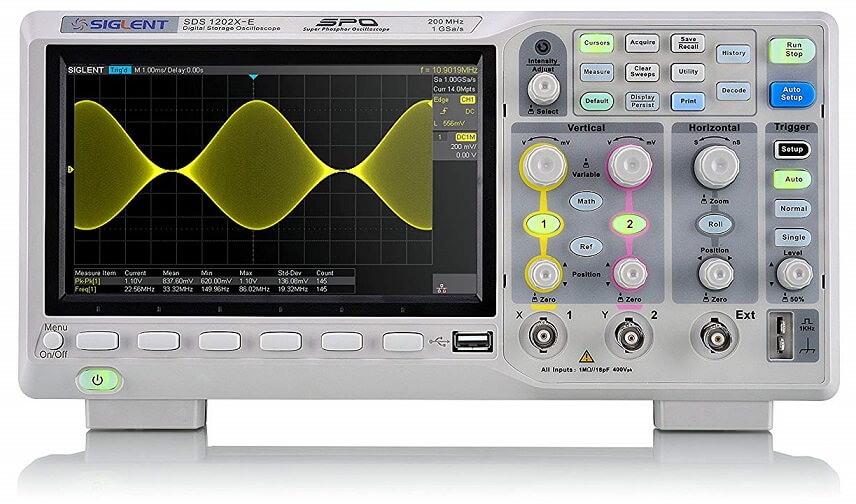

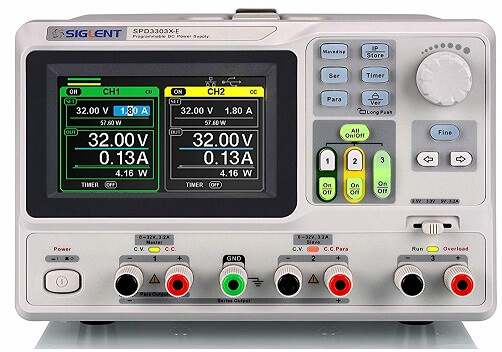



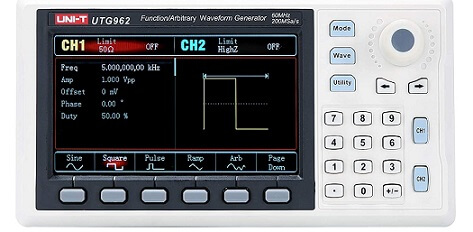
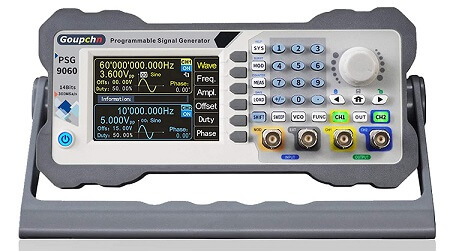
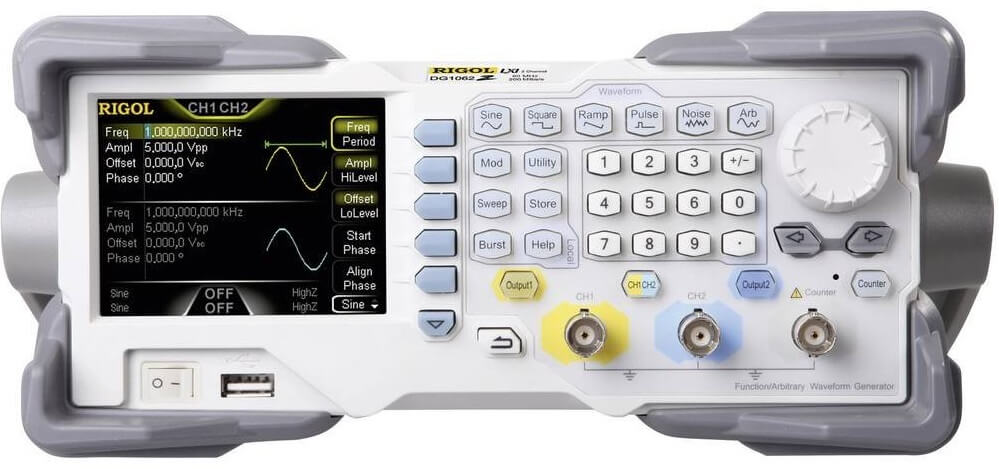


![]()